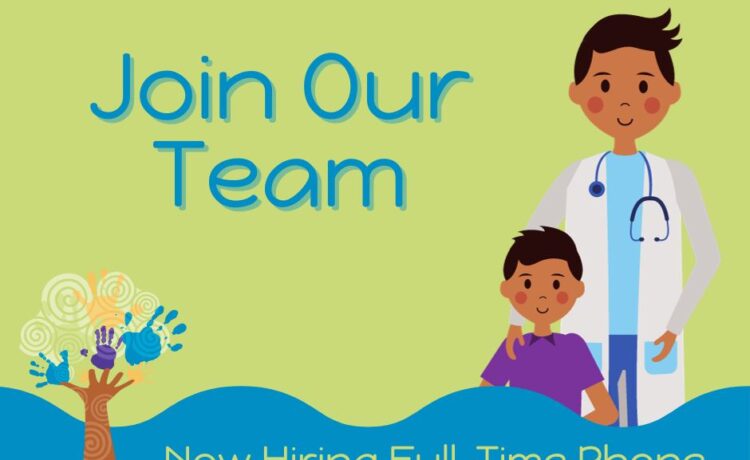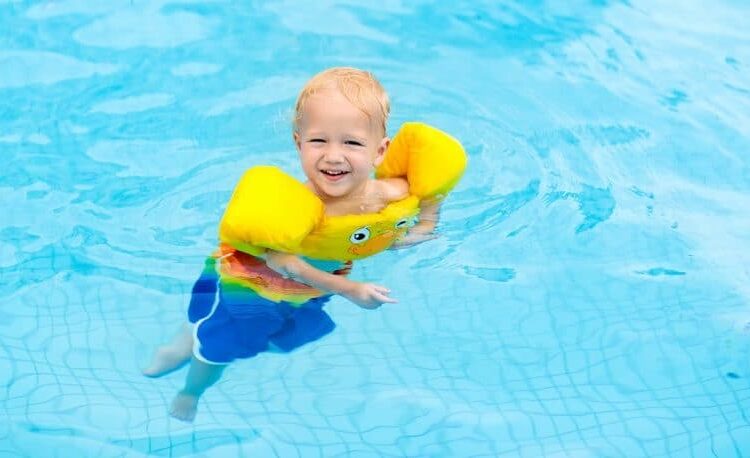Full-Time Receptionist and Phone Operator Needed
We are currently looking for a full-time receptionist and phone operator. Please send resumes to kday@jbrkids.com.
Employment Opportunity – Full-time & Part-Time LPN
The Children’s Clinic currently has full-time and part-time LPN positions open from Monday – Friday.
Please send resumes to: avincent@jbrkids.com.
Now Hiring – Full-Time Lab/X-Ray Technician
We are currently looking to add to our Lab Department. Full-time Lab/Xray technician position is available.
Lab experience is a plus but not required.
Send resume to asheppard@jbrkids.com.
Employment Opportunity – Full-Time Case Manager
The Children’s Clinic is currently has a full-time case manager position open for Monday – Friday. Position includes employee benefits.
Please send resumes to: kday@jbrkids.com.
Summer-Time, Splish-Splash Safety
Keeping Summer-Time Water Activities Safe
With warm weather upon us, we need to be aware of the major cause of injury-related deaths in littles: drowning!
Almost all littles seek out water—and it’s no wonder why. It is shiny and reflects the light, things float in it, and it cools us on a hot day. But, as caregivers, if we teach them to love the water because of family activities, it’s our job to also keep them safe around water.
We hear all the time as we discuss water safety with families, that they never take their eyes off their child around water and that doors are always locked so they can’t get outside unsupervised. Or that they take the pool ladder out of the above-ground pool and so therefore they don’t need the 4-sided fences and all the added safety recommendations discussed below.
But don’t you think all families who have lost a small child to a drowning accident felt the same way?
So now comes all the facts you really never wanted to know or read about, but that you need to hear. Disclaimer, I love the water. I was on the swim team and was a lifeguard and Water Safety Instructor.
But have also seen the tragedies that can happen so quickly, and be forever life-changing!
Drowning 101
Drowning is the leading cause of unintentional injury deaths between the ages of 1-4 years of age in the United States and unfortunately, our state ranks 6th in drowning deaths in the Country.
Infants under the age of 1 are most likely to drown in the bathtub and children between the ages of 1-4 in the home swimming pool, and older children in lakes/rivers and at the beach.
As for the number of near drownings, (drownings that do not result in immediate death), these are not always reported and thus not tracked. However, all significant near drownings need to be taken to the emergency room to be evaluated because of complications that can develop several hours after the event.
How long does it take to drown? Only moments of unsupervised play in or around a body of water can be fatal! The time it takes to reply to a text, get distracted by a phone call, reel in a fish, change a sibling’s diaper, or apply sunscreen to another child can be all it takes.
Children can drown in pools, (in-ground or above ground), hot tubs, at the beach, in lakes and ponds, rivers/streams/and creeks, bath tubs or buckets of water. Remember: littles can drown in as little as 1-2 inches of water!
Protecting Your Children
So what can we do as parents, grandparents, friends and neighbors to keep our children safe?
We can start by being Water Smart: to know how to avoid water dangers.
- Always make sure your child wears a US Coast Guard-Approved Life Jacket for size and weight while boating and when near water (pool/lake/river, etc.)
- Always make sure there is a designated Water Watcher who is not drinking/reading/texting or otherwise distracted and who knows they are in charge.
For older children, they need to be taught the following:
- Never swim alone and only swim in designated areas
- Never dive into unfamiliar water, shallow water or cloudy water whose depth is unknown…and if in this situation always go feet first!
If at the beach be sure to educate your child about riptides and always make sure to follow flag warnings posted on the beach. In addition, if when swimming in a river be aware of the currents and undercurrents which can be as dangerous as rip tides.
Life Jackets: Everything You Need to Know
Here are a few rules to live by when it comes to Life Jackets:
- Only use those that are approved by the US Coast Guard and they are labeled by types and for whom they are designed.
- Life jackets should be worn at all times when on boats and near bodies of water.
- Make sure your child is comfortable wearing their life jacket, and it is sized correctly and it should not be loose and all straps should be fastened.
- Blow-up rings, swimmies, swimmers and rafts don’t count as Life Jackets and are not safe alternatives.
It’s also important to understand the different types of Life Jackets:
- Type 1: is to be used in open bodies of water, but only comes in 2 sizes…adult for above 90 lbs and child for below 90 lbs. They are designed to keep an unconscious swimmer afloat with their head tilted back.
- Type 2: also keeps an unconscious swimmer upright and slightly back but not as successfully as a Type-1 jacket, however, it is more comfortable and comes in many children’s sizes.
- Type 3: designed for conscious swimmers in calm and inland water. It is comfortable and comes in many sizes and styles. There are some puddle jumpers that are approved as type 3 life jackets but make sure to check labels.
- Type 4: are life preservers and are not meant to be worn. They are meant to be thrown to someone who is drowning.
Always Be Aware
Even with the best intentions toddlers get through doors, windows and/or doggy doors to gain access to pools. Even more tragically one-fourth of all drowning in this age group occur in neighbors or family/friends pools.
If you own a pool, (above ground-permanent or portable, in-ground or hot-tub), you always need multiple barriers of protection to keep your child/grandchildren/neighborhood children safe from drowning. The more barriers the better, and these include fences with self-closing and self-latching gates that open away from the pool, door alarms, pool alarms, and pool covers.
Never leave toys or flotation devices in a pool because they can both attract a child to the water or if the child has become submerged they can prevent rescuers from seeing the child floating in the pool.
The more barriers the better, and here is more information on each.
- Pool fences
Should be 4 sided isolation fences that keep the pool separate from the house, and these have been shown to decrease drownings by 83%. These fences should be 4 foot high and with no more than 4 inches between the slats, climb proof, and the latch should be on the inside of the gate and at least 3 inches below the top so a small child can not put their arm over the top and unlatch the gate. The gate should also open out …away from the pool and needs to be self-closing and self-latching and be locked when the pool is not in use. Also, remember to keep pool toys and water floats out of the pool area when not in use so as to not attract toddlers to the water. - Pool alarms
Because drownings are silent, any type of alarm can break this silence and be life-saving. Pool alarms detect waves in the water’s surface and sound off when someone has fallen into the pool. Also, consider placing alarms on pool gates, and outside doors/windows that lead to the pool. Remember alarms need to be checked regularly to make sure they are functional and that they have functioning batteries where applicable. - Pool covers
Need to cover the entire pool securely enough so that a child can not slip under them(remember floating solar and winter covers are not safety covers and do not count), and avoid allowing standing water to collect on top of them because littles can drown in 2 inches of water or less. Power-operated covers are usually the safest and easiest to use. - Drain Covers
Make sure drains are covered to prevent entrapment.
- Water Competency
Make sure your child learns swim skills as early as possible. The American Red Cross suggests safe swim classes start at 6 months and America’s Academy of Pediatrics at 12 months, but ultimately the choice of when to enroll your child in a safe swim class is yours. Please remember there is probably a waiting list and so sign up early. Additionally, have a plan for emergencies and be able to recognize when someone is drowning and remember “reach or throw, and don’t go” and that it’s always wise to know CPR/First Aid.
Lastly, if you have a toddler who is known to be a wanderer and goes missing, head for the nearest body of water first.
Look under pool covers, and take toys and rafts out of the pool to make sure you can see the bottom of the pool and that your child is not floating under them. If you are near a river/creek or lake do not go somewhere else to look before you have thoroughly checked the shoreline or under the dock. Time is of the essence in a drowning and so often searchers come back and the child is found on the second or third round of searching submerged and by that time it is too late.
Enjoy this holiday weekend and the wonderful summer months ahead, but do it safely!
Employment Opportunity – Full-time & Part-time RN
The Children’s Clinic is currently has a full-time RN position open for Monday – Friday.
Please send resumes to: avincent@jbrkids.com.
Job Requirements:
- Current RN License
- Must Be Able to Multi-task
- Communication Skills
Employment Opportunity — Full-Time LPN
The Children’s Clinic currently has full-time and LPN positions open from Monday – Friday.
Please send resumes to: avincent@jbrkids.com.
Medicaid Information
Don’t lose your Medicaid coverage! Check your mail for your renewal form or check your eligibility status.
Learn more by visiting the official Arkansas website, https://humanservices.arkansas.gov/divisions-shared-services/medical-services/update-arkansas-2/.


Employment Opportunity – Full Time Lab tech position
We are currently hiring for a full-time Lab tech position. Medical experience required. On-the-job training for lab responsibilities available.
Great benefits and excellent work environment.
Please send a resume to asheppard@jbrkids.com.
Employment Opportunity — Part-Time X-Ray Tech Position
We are currently hiring for a Part-Time X-Ray Technologist position. Experience is not required but preferred.
Great benefits and excellent work environment.
Please send a resume to asheppard@jbrkids.com








